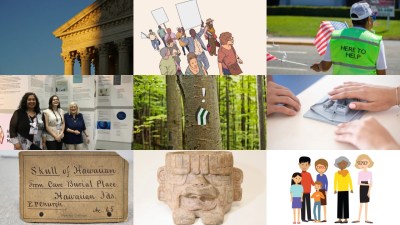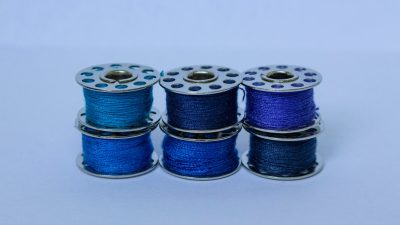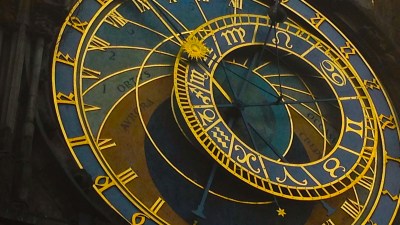
This article originally appeared in the July/August 2019 issue of Museum magazine, a benefit of AAM membership.
In American history, the Civil Rights Movement is held up as a beacon of progress and equality, a momentous time in our country. Recently, however, it has become apparent that our society is still rife with inequities in power and privilege. Aside from individual acts of discrimination, whether intentional or unintentional, discrimination is embedded in our social systems. This institutionalized discrimination systematically advantages certain social groups over others. The norms of these elevated social groups become the norms by which other groups are judged. Groups that don’t adhere to the dominant social norms are considered different, other, inferior.
Unfortunately, museums have played a role in creating and elevating certain groups. CriticaltheoristLouis Althusser used the term “ideological state apparatus” to describe institutions, such as those related to education, churches, family, media, trade unions, and law, that are formally outside state control but transmit the state’s values. Museums have resembled these social institutions through their elevation of the cultural norms of rich, white men, whose collections, interpreted by white academics and presented to the public, became the basis of default cultural norms. Museums have also been shaped by inequities in their social system. It is no secret that the museum workforce lacks diversity, particularly in professional and leadership positions. Within the museum system, these powerful positions create the norms that are regarded as default in our organizations.
As museum practice has evolved, the homogenous nature of the workforce has allowed the cultural values of white men to dictate museums’ recognized standards and best practices. These cultural values have not only shaped museum practice, but also our organizational cultures.
This doesn’t have to continue. Every museum—regardless of size or budget—can take steps to become more culturally competent and inclusive.
The Evolution of Museum Diversification
For more than 40 years, diversity in museums has been a topic of conversation. Though much work has been done over this period, museums have fundamentally failed to serve communities of color and other communities that are marginalized in our social system. However, the emphasis on diversity has increased sharply in the past decade, with museums creating new mission statements and including more diverse content in their exhibitions and programs.
This increased focus isn’t simply altruism. Given this country’s changing demographics, the relevance and viability of our museums are at risk, and museums are experiencing interest convergence. According to Derrick Bell, who was a professor at New York University School of Law, interest convergence explains an increase in support for racial equity work by white people when they understand and see that their needs will also be met.
Museums’ traditional support base is shrinking, while groups that are underrepresented in our stakeholder profiles are growing. This is not to imply that museum professionals across the country are not passionate about diversity work, but it has increasingly become a priority as the reality of this demographic shift has set in.
Today, museum conferences center annual themes on diversity, inclusion, equity, and accessibility. Project work, think tanks, and grant programs have also begun to support more inclusive museums. Interest convergence has opened the door for museum practitioners who have been advancing diversity work. Colleagues from around the country emphasize more diverse and inclusive museums through projects such as Museum As Site for Social (MASS) Action, Museums & Race, and AAM’s Facing Change initiative. The field is building capacity to create meaningful change.
One of the bigger shifts includes a greater internal focus for diversity and inclusion work. In the past, diversity initiatives focused primarily on content and community engagement, positioning diversity efforts as programs rather than organizational initiatives. Increasingly, museum inclusion and equity practitioners have challenged the field to turn the lens inward and take a critical look at ourselves.
However, creating new mission statements or diversity programs cannot be successful in an organizational culture that continues to support dominant culture norms as the status quo. Museums must understand how they have participated in the marginalization of groups outside the dominant culture. Museums must recognize how those same dominant norms have become embedded into organizational policies and practices that have been deemed successful over time. Organizational self-awareness shifts diversity and inclusion work from an externally facing program to an internal change initiative.
There are no easy answers, and inclusion and equity work is not one-size-fits-all. But there are two things I feel are fundamental to any inclusion initiative. First, we have to acknowledge that systemic inequities exist, and they affect our museums just like any other social institution. Too often, we spend time trying to prove the existence of inequities rather than doing the work of inclusion. People who don’t experience inequities—and often even benefit from them—can wrongly think they aren’t there.
Second, we need to treat inclusion and equity work the same way we treat any other facet of museum work. Inclusion and equity are not “everyone’s job” because not everyone is qualified to do inclusion work—just like not everyone is qualified to do curatorial or educational programming work. Museums need to dedicate staff time and resources to ensure a consistent, intentional emphasis on creating a more inclusive organization.
What We’ve Done
In the summer of 2014, the Minnesota Historical Society (MNHS) created the Department of Inclusion and Community Engagement (DICE) to provide the structure to develop and implement an inclusion initiative across the institution. The first step in the process was convincing leadership that social inequities impacted our work. DICE spent nearly two years assessing intercultural competence and the organizational culture. The results not only helped DICE staff better understand the needs of the organization, but also provided the empirical evidence that helped our leadership understand that we needed to shift from a diversity program—meaning percentages, numbers, and surface-level representation—to an inclusion effort focused on internal change. We are now focused on the following three components.
Intercultural Competence Development
Creating more exhibitions or programs that highlight diverse content without collaboration from people who live within the culture still comes off as paternalistic. In order to collaborate, learning to work across difference is critical. At MNHS, we provide professional development opportunities—workshops, cohort learning models, readings, discussions, and a full-day conference organized by DICE staff—for staff to work toward increasing intercultural competence.
In addition, we are taking the Head, Heart, and Hands approach to developing intercultural competence. The Head is cognitive knowledge. How much do we know about the cultures that we want to engage? The Heart is the affective or emotional. How do we feel about people from different cultures? How do we feel when we are working with people from different cultures? This includes concepts like empathy and open-mindedness. The Hands is skills-based learning that includes effective cross-cultural communication, listening, and self-reflection.
To reach the Head, community members or organizations can present to staff, or individuals can undertake their own research and learning efforts. The Heart and the Hands can be developed through targeted professional development, such as workshops or individual coaching, on skills and affect.
Inclusive Organizational Culture
Often, museums set goals to diversify their workforce. The focus is the hiring process, and the museum’s organizational culture is not recognized as a barrier to staff retention. To retain diverse staff members, museums must have an inclusive organizational culture.
At MNHS, we created an organizational culture assessment to better understand the culture and working environment. We found that staff of color and LGBTQ staff, in particular, felt marginalized. We needed to create a safe space and a process for people with these identities to advocate and impact the organization’s work.
We developed Employee Resource Groups, which consult on various departmental internal projects but also raise issues of inequity and offensive content or behavior. They also help recruit staff and shift the perception of MNHS in external communities with like identities. Through these groups, staff members feel more comfortable bringing their authentic selves to work, which maximizes the positive impacts of diversity within the organization.
Cultivating a Diverse Employee Pool
Increasing staff diversity is a goal at MNHS, but rather than zeroing in on recruitment, we have focused on cultivating a more diverse candidate pool. Utilizing programs aimed at high school, undergraduate, and graduate students, DICE staff demystifies the career pathways within museums.
High school students learn about the importance of history and its connections to contemporary issues. Undergraduate students learn about issues of inclusion and equity facing museums and various career pathways while gaining museum experience through internships. And graduate students undertake even more in-depth field experiences while earning a master’s degree through a program partnership between MNHS and the University of Minnesota.
I recognize that not every museum budget can support such programs. The scalable factor here is to invest in cultivating talent over the long term. Rather than a one-off internship or volunteer experience, provide a range of opportunities to build experience and skills for emerging professionals.
Museums have the ability to address systemic inequities, but they must recognize that they have embedded these inequities into their organizational systems. Focusing inclusion work on seeking out and addressing systemic issues within our so-called best practices and standards will remove the barriers to becoming inclusive museums. Only then will our field see the type of large-scale, sustainable change necessary to keep our institutions relevant in the future.
Food for Thought…and Action
At your next staff, leadership, and board meetings consider taking some time to discuss the following questions to highlight where your organization could focus its inclusivity efforts.
- What is the leadership style of your organization? Command and control? Collaborative? Situational? Transformative? Does leadership see the style the same way employees do?
- What is the turnover rate of employees that identify as diverse compared to staff that identify with the dominant culture?
- What types of learning opportunities does your organization provide employees to develop inclusive behaviors or intercultural competence?
- What type of employee engagement assessment does your organization conduct? Does it include elements that pertain to diversity and inclusion?
- What are the stated values of your organization? What values would employees say are actually lived within your organization? Are these in alignment with the stated values?








Comments